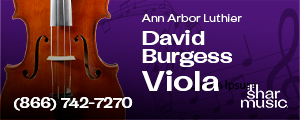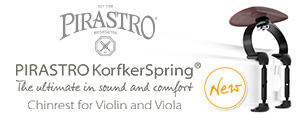
Longwood Symphony
December 8, 2006 at 12:27 AM
I went to see the Longwood Symphony Orchestra over the weekend, for my birthday. First of all, my former neighbor, Owen Young, a cellist with the Boston Symphony, was playing the Saint-Saens Cello Concerto, No. 1. When he and I lived in the same condo complex a few years ago, I'd heard him practicing through the walls of his townhouse sometimes. I figured he must be good if he was in the BSO, but I didn't know how good. Second of all, I wanted to see what the Longwood Symphony was like. I wanted to know if I had a chance to make it next year.On the first point, was Owen good, the answer was yes, yes, and yes. Wow. He kicked a**. And on top of that, he has a beautiful-sounding instrument. He's played a few other solos locally, I can find them on the web, but I don't think he's recorded any CD's. That's too bad, I'd buy them!
Most of my previous experience with listening to the cello has been with students, and it has always seemed to me that they had to be careful not to moo like a cow. I never cared for the cello all that much and I certainly never wanted to carry one around on a bus the way I did with my violin for years. But, there's something so deep and satisfying about the way it sounds when the bow is being pulled across the string of a really nice cello by a really talented player. It's similar to what I like about the sound of my viola.
Why is this sound so conspicuously lacking from my violin? I called a luthier today, finally, and left a message. It was the second place I called. The first place was snotty about the fact that I had not purchased the instrument at their store and wouldn't touch it because of that. (No, sorry, it was purchased from a private party in upstate New York in 1978).
On the second point, it was hard to tell. I had hoped I could sit near the violas and watch them, but my husband bought the tickets and from the seats he got we could see the soloist really well, and the first violins. After trying to watch the violas for a while and giving up, I decided to watch the firsts instead, and they were fascinating. I think there's a greater degree of variety in posture and style in amateur orchestras than in professional ones. Just in the two stands on the end, there was a very upright, extremely straight sitting-on-the-edge-of-the-chair, perfectly-made-up woman, right behind a kind of slouchy guy who looked too big for his instrument. My first thought about him was, get this man a viola. My second thought was, get him to the Alexander Technique, fast. But maybe it's the really straight sitting woman who needs the Alexander Technique. Trying to sit up really straight used to give me serious back pain in orchestra rehearsals.
In general, they were really good. But as a section they seemed to lack some cohesion in places. Fast passages could be muddy, especially in the Saint-Saens, and it was especially noticeable there when Owen played something and then passed the theme to the orchestra. He was always crisp and clear and right on, and they were sometimes, well, not. They weren't out of tune or obviously not together, it was just a little mushy.
The final piece was Bernstein Symphony No. 1, “Jeremiah.” I was not familiar with it and I'm not sure I really "got" it. It went by quite fast. The second movement was supposed to represent the malign influence of paganism, according to the program notes, but I thought it sounded surprisingly playful and cheerful. I didn't really understand where the notion of defilement was supposed to come in.
And I just have to ask this of the more experienced concert musicians: what is it with operatic singers and vibrato? As in, why do they use so much? The mezzo-soprano here had a beautiful voice in many ways: clear, projecting, perfect intonation. But I felt she used too much vibrato and it was distracting. The movement was supposed to be a lamentation in Hebrew and she didn't sound grieficken.
I've heard other "classical" singers and they all use at least that much vibrato as she did. She wasn't unusual or off-scale by those standards at all. But in "pop" music, with performers like Mariah Carey or Whitney Houston, yeah, they use some vibrato, but not like that.
In my own music, on the violin and viola, I've also been trying to work out how much vibrato I want to use and when. And I'm finding that often, for me, less is more. I'm curious how the convention developed in any case. Am I just showing my amateurity by saying that I prefer the "pop" style with less vibrato? Or is that a legitimate opinion held by others?
Then I talked to one of my friends at work who plays the violin and found out that she tried out last year for this orchestra and didn't make it. I've never heard her play; I don't know how good she is. She works pretty hard in lab, hasn't studied as long as I have, and probably doesn't have a lot of time to practice. And she said she was really nervous at her audition and she didn't even think she sounded very good. But still, even knowing all that, for some reason,knowing and liking someone who tried out and didn't make it makes me nervous. I wish she had made it. At least then I'd know someone who could tell me what it's like.
Posted on December 8, 2006 at 5:07 AM
>Trying to sit up really straight used to give me serious back pain in orchestra rehearsals.
That`s for sure. You immediately start using whta my Alexander Teache rrefers to as `doing` muscles when you do that. To use yourself well you use your being muscles which are only efificent when the primary control is okey dokey. thus it is quite possible that the slumped guy is acually doing rather better with good primary control within a slump than the forcedly upright player. Its pretty unlikely though...
Cheers,
Buri
Posted on December 8, 2006 at 2:27 PM
The experience reminded me of the last chapter of _Blink_, in which the author writes about the rationale for modern orchestras to conduct auditions with the auditionees behind a screen so that only the sound matters. Given how much it seems I was affected by my visual impressions of the players, I am very supportive of that practice.
This entry has been archived and is no longer accepting comments.
Violinist.com is made possible by...
International Violin Competition of Indianapolis
Dimitri Musafia, Master Maker of Violin and Viola Cases
Johnson String Instrument/Carriage House Violins
Subscribe
Laurie's Books
Discover the best of Violinist.com in these collections of editor Laurie Niles' exclusive interviews.

Violinist.com Interviews Volume 1, with introduction by Hilary Hahn

Violinist.com Interviews Volume 2, with introduction by Rachel Barton Pine






